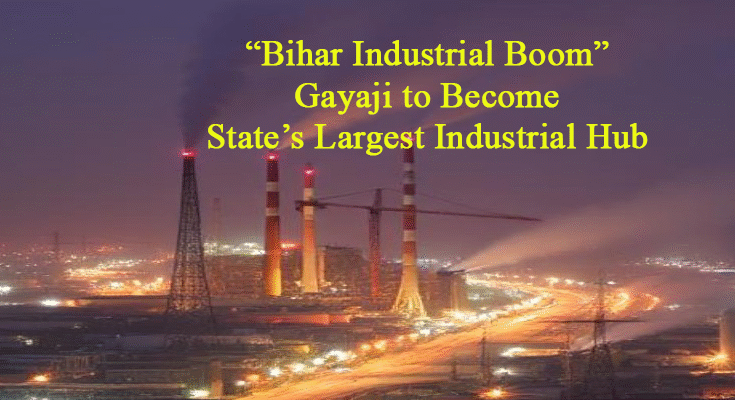Patna: Bihar is rapidly stepping into a new era of industrial growth. No longer just known for its agricultural strength, the state is now preparing to make a bold mark on India’s industrial map. From Patna to Kishanganj, and Munger to Madhubani, large-scale industrial parks and hubs are being developed, signalling a major economic shift.
At the heart of this transformation is Gayaji, where Bihar’s largest industrial park is coming up. Spread across 1,670 acres, this state-of-the-art park is being developed in Dobhi under the Amritsar-Kolkata Industrial Corridor, with a massive investment of ₹1,339 crore. Once completed, it will be the state’s biggest industrial cluster, offering over 43,000 job opportunities, both directly and indirectly.
What makes this park special is its focused planning. Land has been earmarked for various industries — from food processing and furniture, to ready-made garments, leatherite, technical manufacturing, and even handloom, logistics, and building materials. This project is set to become a game-changer for the region’s economy and employment.
Industry Minister Nitish Mishra has said that the government is actively working to make more land available for industrial use, ensuring that Bihar attracts more investors and entrepreneurs in the coming years.
But the development isn’t limited to Gayaji alone. The state is seeing industrial expansion in several other districts. In Munger’s Sangrampur, 50 acres of land have been handed over to the Industries Department, where infrastructure work is already underway. In Madhubani’s Jhanjharpur, a 712-acre industrial park is under development. Similarly, large chunks of land are being developed in Vaishali and Sitamarhi districts.
As part of Chief Minister Nitish Kumar’s Pragati Yatra, a vision was laid out to bring industrial development to even those districts that were previously untouched. So far, around 21,273 acres of land have been identified for industrial use — including in seven backward districts like Arwal, Jamui, Kaimur, Saran, Sheikhpura, Shivhar, and Banka.
Of this, over 18,000 acres are private lands, and about 3,100 acres are government lands. Already, 457 acres have been formally transferred to the Industries Department.
With policy support, infrastructure development, and land availability moving in tandem, Bihar is no longer waiting on the sidelines. The state is now actively paving the way for an industrial revolution — one that promises jobs, growth, and a new economic identity for millions.




